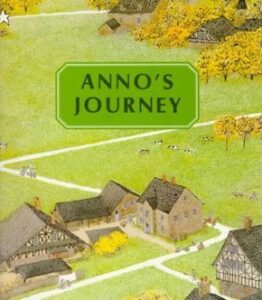Looking ahead by looking behind
by Mika Provata-Carlone“Where did you go to, if I may ask?” said Thorin to Gandalf as they rode along.
“To look ahead,” said he.
“And what brought you back in the nick of time?”
“Looking behind,” said he.
J.R.R. Tolkien, The Hobbit
2020 has been without a doubt, and without exception, an unexpected journey to the depths of our humanity; it has been a test of our resolve and forbearance, despair and hope, and sense of community, whether one thinks of the pandemic that has ravaged every corner of our world, or of the social crises we have long delayed in confronting on so very many levels. As the year comes to a close, the message of a new beginning and of light is perhaps more yearned for than ever: the wish on everyone’s lips is perhaps just this, that we may yet be brought back in the nick of time to a world we can rejoin and cherish. This year’s Christmas list of books for children young and old also summons stories that we should not leave behind, so that we may enrich the tale that might accompany us on the way ahead…
A picture is worth a thousand words…

 Small in the City by Sydney Smith
Small in the City by Sydney Smith
(Walker Books)
As the world retreated into self-isolation, the vastness of cities loomed even more disproportionate, more so for those with small bodies and big eyes. This is a charming tale of re-dimensioning, of co-presencing, of that Shakespearean golden rule “two distincts, division none”.
Howl by Kat Patrick and Evie Barrow
(Scribble)
You must have heard the words a thousand times in the past nine months or so: cabin fever… This is a quirky, sweet-and-serious book on how to mindfully and howlingly blow off steam, without blowing the world apart…
 While We Can’t Hug by Eoin McLaughlin and Polly Dunbar
While We Can’t Hug by Eoin McLaughlin and Polly Dunbar
(Faber)
You will need this essential vademecum as you navigate fragile baubles and brittle bubbles this holiday season.
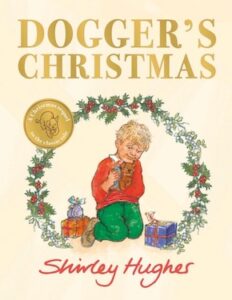 Dogger’s Christmas by Shirley Hughes
Dogger’s Christmas by Shirley Hughes
(Bodley Head)
Often the things that matter most are small and humble, full of memories and human presence. This is a simple fable of never letting go of the narratives that sustain us, by a writer who is herself by now both a story and a legend.
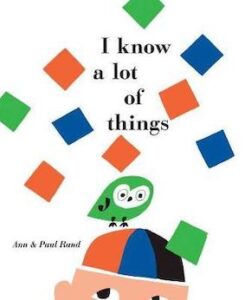
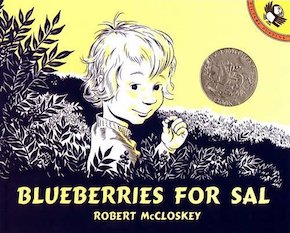 Blueberries for Sal by Robert McCloskey
Blueberries for Sal by Robert McCloskey
(Puffin)
Another book of grandparental vintage, this is a rambunctiously charming tale of little imps and grown-up angels. Or is it the other way around?
I Know a Lot of Things by Ann and Paul Rand
(Chronicle Books)
Starkly original, yet timeless – this was first published in 1956. A book to reframe young minds, to startle them with the quiet yet evocative simplicity of forms, words, dreams and very real things.
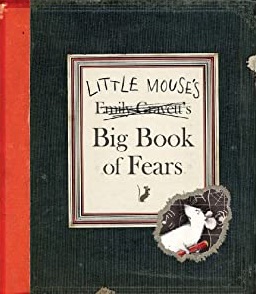
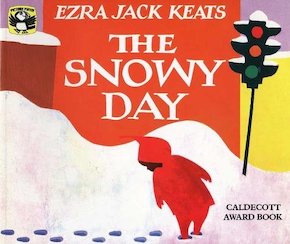 Little Mouse’s Big Book of Fears by Emily Gravett
Little Mouse’s Big Book of Fears by Emily Gravett
(Two Hoots)
2020 has been a year of fear and fearlessness, of bravery and despair. This is a beautiful story that will take you and your shaken-but-not-daunted little ones all the way to the Isle of Fright and back again.
The Snowy Day by Ezra Jack Keats
(Puffin)
One thing 2020 has perhaps taught us is that things are never just black or white. This is a gorgeously crafted book, a beautifully conceived story of the many layers and shades of our common humanity.
 Millions of Cats by Wanda Gág
Millions of Cats by Wanda Gág
(Faber)
Loneliness has become part of the pandemic experience, and it has been exposed as the elephant in the room of our communal and private lives. This is the story of a great gathering, of inexhaustible companionship, a tongue-in-cheek tale of wisdom about how to give and how to take, of how to be where you are.
Anno’s Journey by Mitsumasa Anno
(Turtleback Books)
You will probably think hard this year before you fly/drive/sail off to a winter holiday. Let this wordless enchanted world of images lull you as far as you have ever dared to go.
A time for reflection, a time for reflected action, a time for actions
that reflect our humanity…
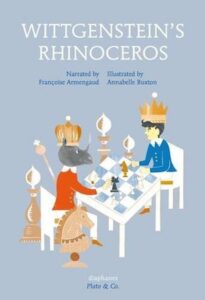
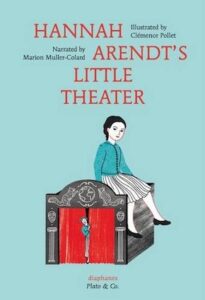
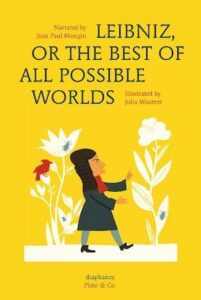 Wittgenstein’s Rhinoceros by Françoise Armengaud & Anabell Buxton
Wittgenstein’s Rhinoceros by Françoise Armengaud & Anabell Buxton
Hannah Arendt’s Little Theater by Marion Muller-Colard & Clémence Pollet
Leibniz, or the Best of All Possible Worlds by Jean Paul Mongin & Julia Wauters
(Diaphanes)
This is but a sampling of a rather exciting series for budding philosophers or for little minds bursting with questions, especially so in our current world of very few answers. Whether they will lure your young ones towards the life of the mind or perplex them with the puzzles of real or imaginary pachyderms, these are some of the stories of how we have tried, succeeded or failed to make sense of our ever-wondrous, ever-challenging lives.
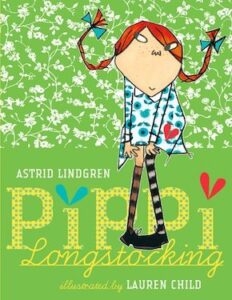
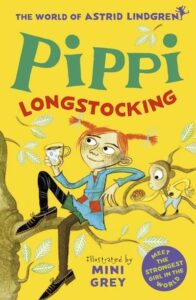
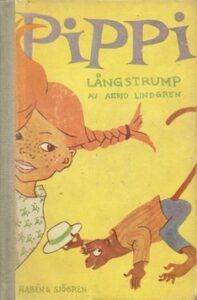 Pippi Longstocking by Astrid Lindgren
Pippi Longstocking by Astrid Lindgren
(OUP)
There is certainly practical philosophy in Astrid Lindgren’s classic story, and a philosophy of life based on resilience, friendship, the conviction that there is wonder and hope, right and wrong, kindness and daring, and that a very small red-haired little girl can change the world. Editions with Mini Grey’s or Lauren Child’s illustrations are equally appealing, unless you can find an older copy with Ingrid Vang Nyman’s original black-and-white, beautifully simple drawings, that accompanied Lindgren’s own words
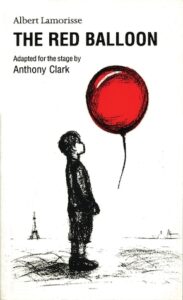 The Red Balloon by Albert Lamorisse
The Red Balloon by Albert Lamorisse
(Bloomsbury)
Perhaps you also run through the empty streets of where you live after a red balloon, after the meaning of hope, and a glimmer of light? Let Lamorisse’s book, based on his redolently unforgettable film, remind you that old voices, images, the emotions that have no time or age, are the best guides towards a renewed humanity.

Where Snow Angels Go by Maggie O’Farrell & Daniela Jaglenka Terrazzini
(Walker)
Another quest for that inner strength we never thought we possessed. Beautifully illustrated, timely and timeless, this is a story full of the questions children and those who were children a long time ago have not stopped asking this year.
 The Fantastic Flying Books of Mr Morris Lessmore by William Joyce
The Fantastic Flying Books of Mr Morris Lessmore by William Joyce
(Simon & Schuster)
Many violent winds have scattered the leaves of numberless human stories this year. This is a beautiful story on how to recollect the words and the broken pieces, how to make whole what may seem irreparably broken. A song of praise to books, the imagination, the redeeming power of narratives.
 The Three Questions by Jon J. Muth
The Three Questions by Jon J. Muth
(Scholastic)
Tolstoy had a rare gift for spinning stories that transcend cultures, time or generations. This retelling is a captivating introduction to a writer who may well become a child’s friend for life.
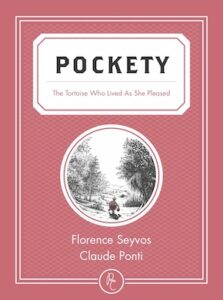
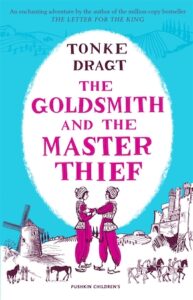 Pockety by Florence Seyvos
Pockety by Florence Seyvos
(Pushkin Children’s)
2020 has been, if anything, a year of grief and of loss – a year full of the desperate need for time and life regained. Pockety’s story is a stark and gentle tale of devastation and of the courage to be. Lose yourselves in Claude Ponti’s unforgettable images of the world, recover yourselves in the simple allegory of renewal and remembrance that the story contains.
The Goldsmith and the Master Thief by Tonke Dragt
(Pushkin Children’s)
You will start seeing double almost right from the beginning in this story by master storyteller Tonke Dragt. You will also find that the clearest vision comes from a plurality of angles and perspectives.
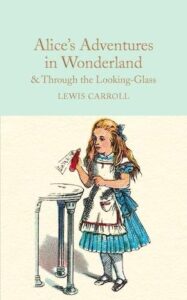 Alice’s Adventures in Wonderland and Through the Looking-Glass, and What Alice Found There by Lewis Carroll
Alice’s Adventures in Wonderland and Through the Looking-Glass, and What Alice Found There by Lewis Carroll
Choose an edition that is satisfyingly readable, preferably featuring John Tenniel’s illustrations, or those by Ralph Steadman. Whether you would like to pass on the hankering for genius or the relish for mere and glorious whimsy, do go again through that looking-glass, and see what new and old wonders you may find there.
 The Chronicles of Narnia by C.S. Lewis
The Chronicles of Narnia by C.S. Lewis
(HarperCollins)
See what you think of this journey of loss and redemption, of mystery and clarity in the light of new challenges, old questions, and our ever-same, ever-Protean humanity.
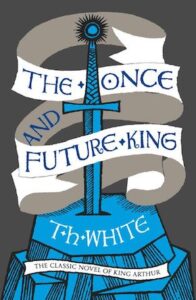 The Once and Future King by T.H. White
The Once and Future King by T.H. White
(HarperVoyager)
A philosophical tale that wears its great wisdom with feather-like lightness. We often forget how old are the tales of our current joys and woes.
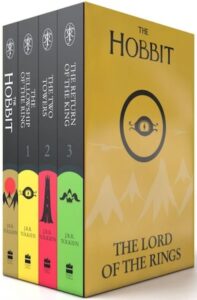 The Hobbit and The Lord of the Rings by J.R.R. Tolkien
The Hobbit and The Lord of the Rings by J.R.R. Tolkien
(HarperCollins)
You will have probably read your own copies of these to exhaustion and to levels of unimaginable dilapidation. So get new copies of these wondrous old stories – to give away, or mayhap to keep and dip into yet again.
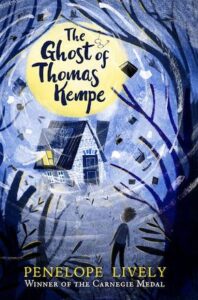 The Ghost of Thomas Kempe by Penelope Lively
The Ghost of Thomas Kempe by Penelope Lively
(Egmont)
According to Lively, “Language tethers us to the world; without it we spin like atoms.” It has been a whirlwind of a year, and a sense of belonging has been at the heart of every single issue that has shaken our world. This is a story about memory and the visions of our future, about the pastness of the past and its presence. About chaos and order, essential otherness and yearned-for identity.
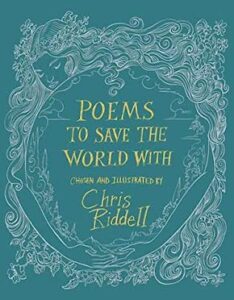 Poems to Save the World With by Chris Riddell
Poems to Save the World With by Chris Riddell
(Pan MacMillan)
The pen is certainly claimed to be mightier than the sword or the modern roadblock in this inspired and inspiring collection of verses by such human echo-chambers as John Dryden and Rudyard Kipling, to Abraham Lincoln or Kushi Daryani.

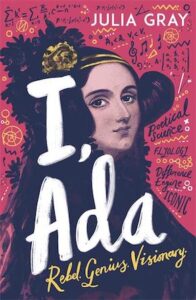 What Are Little Girls Made Of? by Jeanne Willis & Isabelle Follath
What Are Little Girls Made Of? by Jeanne Willis & Isabelle Follath
(Nosy Crow)
You will be singing a brand-new tune or nursery rhyme by the end of this perfectly poised and unabashedly maverick deconstruction and rewriting of old yarns and female narratives.
I, Ada: Rebel, Genius, Visionary by Julia Gray
(Andersen Press)
It is an old and venerable tradition to offer children or those about to become adults the stories of those who have made the crossing of the ages before them. This is a rare find of a book, a story that will guide and beguile, as well as redefine the measure of many things.
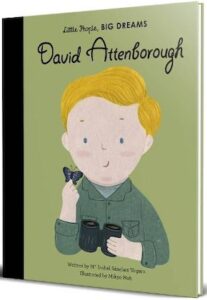
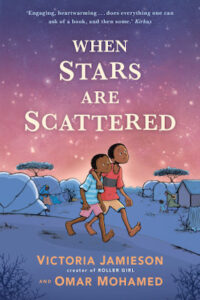 David Attenborough by Maria Isabel Sanchez Vegara & Mikyo Noh
David Attenborough by Maria Isabel Sanchez Vegara & Mikyo Noh
(Frances Lincoln Publishers)
For much younger rebels, geniuses and visionaries, this is a captivating way to nurture the next generation of Attenborough fans and nature-minders.
When the Stars are Scattered by Victoria Jamieson & Omar Mohamed
(Faber)
Inspirational lives can be small and inconspicuous as well as famous and great, and this story of permanent impermanence, of limbo and of extraordinary faith in life will grip and move you, whatever your own narrative or age.
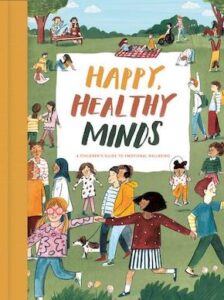 Happy, Healthy Minds: A Children’s Guide to Emotional Wellbeing by The School of Life & Lizzy Stewart
Happy, Healthy Minds: A Children’s Guide to Emotional Wellbeing by The School of Life & Lizzy Stewart
(The School of Life Press)
This is for children and grown-ups alike, to help reinforce vital understanding and communication: on how to grow up, and how to remember what it was like when we were still little. Seriously engaging and engagingly serious, a manual for self-development and for forming the right kind of autonomy and attachment: for looking ahead by looking behind.
 Albert Einstein’s Theory of Relativity by Carl Wilkinson
Albert Einstein’s Theory of Relativity by Carl Wilkinson
(Laurence King)
From another time of radical shifts and changes comes a story that is still shaking our world. A simple guide that takes no shortcuts for young boffins.
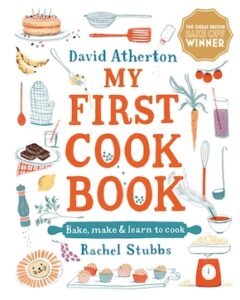 My First Cook Book by David Atherton & Rachel Stubbs
My First Cook Book by David Atherton & Rachel Stubbs
(Walker Books)
Kitchens have been at the centre of our lives this year, whether as gathering places or as the laboratories of the most fantastical creations. For the next generation of culinary pioneers and larder raiders.
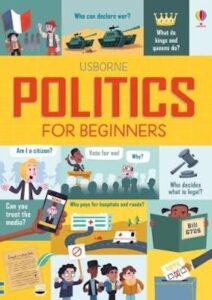
 Politics for Beginners by Louie Stowell, Alex Frith and Rosie Hore, illustrated by Kellan Stover
Politics for Beginners by Louie Stowell, Alex Frith and Rosie Hore, illustrated by Kellan Stover
(Usborne)
Whether it will make young and old make sense of many things around the world now or long before, this is a shrewdly balanced guide on how one can develop a finer sense of civic engagement and of the values that should inform the arena of the common good. Perhaps a copy should be sent to several current politicians?
Kay’s Anatomy: A Complete (and Completely Disgusting) Guide to the Human Body by Adam Kay & Henry Parker
(Puffin)
To cough or not to cough has been an existential dilemma this year. This is a warts-and-all manual to the human body and its ailments, that never loses sense of the miracle that is life –and medical science. For all young minds that wish to know how the body works or why it often doesn’t.
The Life of our Lord by Charles Dickens
(Simon & Schuster)
Dickens wrote this for his children, at around the time of David Copperfield. It would be published in 1934, another time when humanity needed at least one guiding light. It is unlikely you will escape some version of The Christmas Carol this festive season, and this is how it all began 2,020 years ago.
Mika Provata-Carlone is an independent scholar, translator, editor and illustrator, and a contributing editor to Bookanista. She has a doctorate from Princeton University and lives and works in London.
bookanista.com/author/mika/


